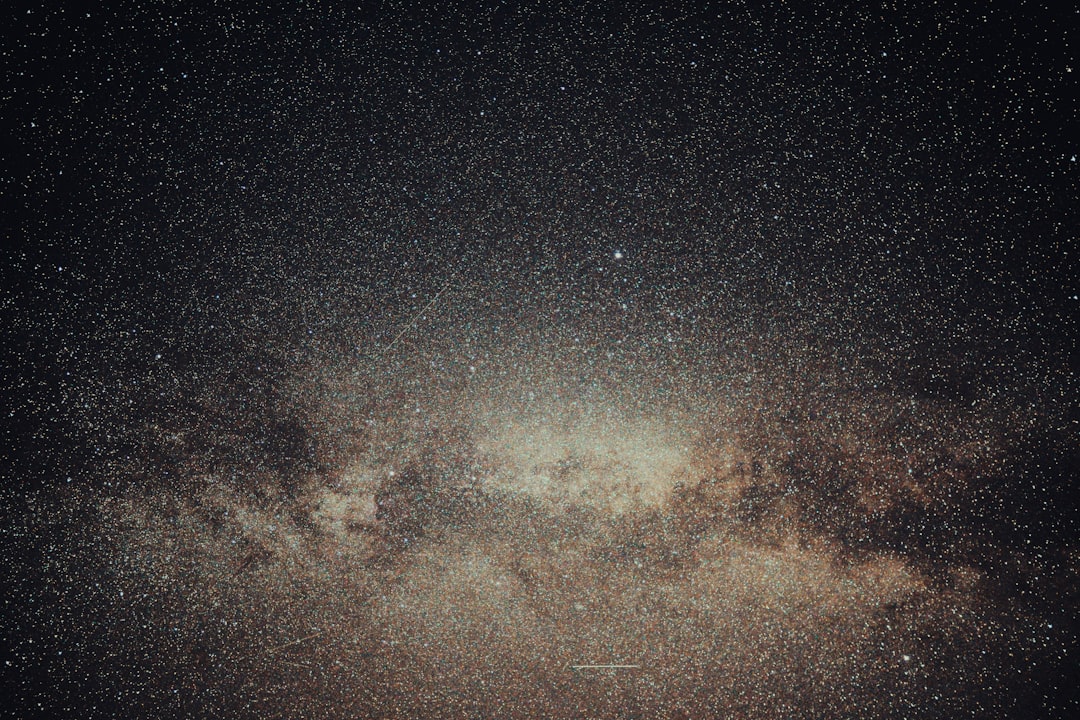What is it about?
The 1972 Parker magnetostatic theorem explains how the Sun’s fully ionized, magnetized, X-ray emitting corona is readily maintained at million-degree temperatures everywhere. As an excellent electrical fluid-conductor, the corona is driven by the electric motor, Lorentz force exerted by its magnetic field, with fluid motions acting as a dynamo generating changes in the electric current and magnetic field. On the small scales, no force equilibrium is possible because balancing the Lorentz force endlessly forces a ubiquitous irrepressible formation of infinitesimally thin current sheets that must dissipate into heat by the otherwise negligibly small, coronal electrical resistivity. The featured article constructs an insightful understanding of the theorem by explicitly relating the components of this universal astrophysical process to the topology of the magnetic field.
Featured Image

Photo by Ryan Olson on Unsplash
Why is it important?
Modern space science began with the 1958 theoretical discovery of the late Eugene N. Parker (1927-2022) that the solar corona cannot be gravitationally bound but must perennially expand into the supersonic solar wind filling interplanetary space out to beyond the orbit of Pluto. This concept-transforming astrophysical reality was shortly confirmed by the early Soviet and US human made satellites. The investigation of outer space was a unique half-century venture, marked by NASA’s twin spacecraft Voyager I and II having by 2022 reached the transition of the wind into interstellar space, and by NASA’s current Parker Solar Probe (launched in 2018) orbiting into the Sun to detect the source of the wind. Parker had at the outset suggested that it is a ubiquitous magnetic heating that drives the coronal expansion into the wind, specifically identified by his 1972 theorem and intense investigations that followed. The constructive understanding of the theorem presented in the featured article paves way for research advancements on the spontaneous current sheets that today explain why stars and galaxies commonly possess X-ray coronae; see the images of the X-ray stellar coronae in the Carina constellation available at the URL below of the NASA Chandra X-ray Observatory. Further reading: Spontaneous current sheets in magnetic fields with applications to stellar X-rays, E. N. Parker, Oxford U Press, 1994. Conversations on electric and magnetic fields in the Cosmos, E. N. Parker, Princeton U Press, 2007. The Sun as a guide to stellar physics, edited by O. Engvold, J.-C. Vial & A. Skumanich, Elsevier, 2019.
Perspectives
The Sun is a unique natural laboratory where we observe and discover phenomena beyond those encountered in terrestrial laboratories. The wealth of solar observational data from the ground and space platforms we now possess seems overwhelming, too much details as one might complain until a good, correct physical question is asked about a phenomenon. The study of the Sun is as much about explaining an observation with known physics as it is about discovering new physical processes in terms of which a baffling observation can finally be explained. The solar corona as the pinkish halo around the Sun during a fleeting total eclipse, has been seen by human eyes since prehistorical times before humans knew what it is. The eclipse photo by Ryan Olson shown here reveals the fully-ionized corona by the white light streaming from the solar surface and scattered by coronal free electrons into the observer's line of sight. At its million degree temperatures, the corona radiates in X-rays that space borne X-ray cameras these days routinely image to observe coronal magnetic structures against the relatively cool 5,000 degree solar surface that is invisible in the X-ray window. The author is a retired senior scientist at the High Altitude Observatory of the National Center for Atmospheric Research, a major facility sponsored by the US National Science Foundation.
Boon Chye Low
National Center for Atmospheric Research
Read the Original
This page is a summary of: Topological nature of the Parker magnetostatic theorem, Physics of Plasmas, January 2023, American Institute of Physics,
DOI: 10.1063/5.0124164.
You can read the full text:
Resources
NASA Heliospheric Physics
NASA research programs studying the Sun and the heliosphere
NASA Parker Solar Probe Mission Blog
Latest Mission News and Media Resources
Parker Two Workshop June 21 – 24, 2022
Conference Program and BC Low's Powerpoint presentation in celebration of E. N. Parker
The Sun
This is a slide-based introduction to solar physics.
X-ray stellar coronae in constellation Carina
Observations of the stars in constellation Carina in infrared, optical & X-ray wavelengths.
Contributors
The following have contributed to this page










